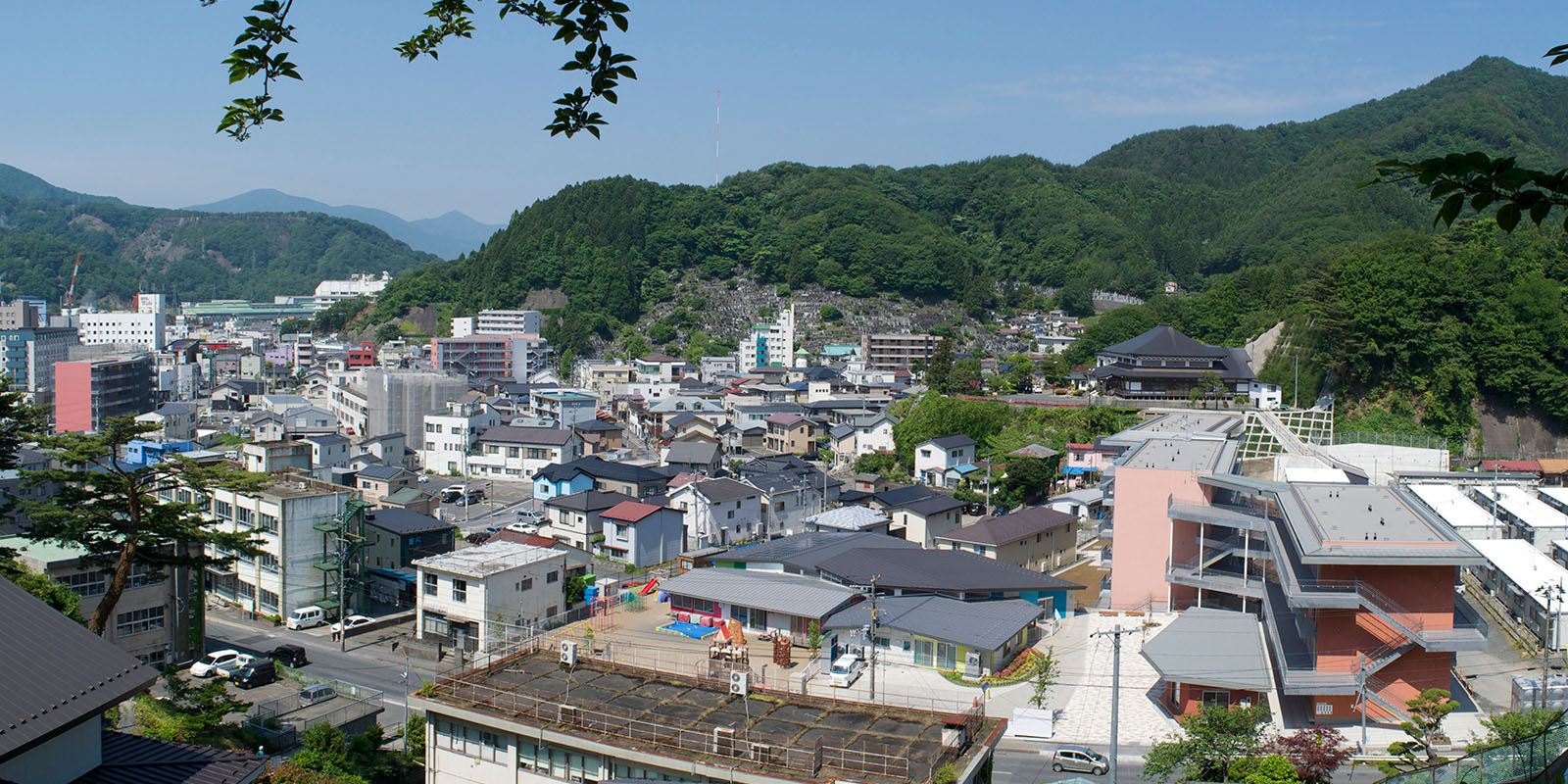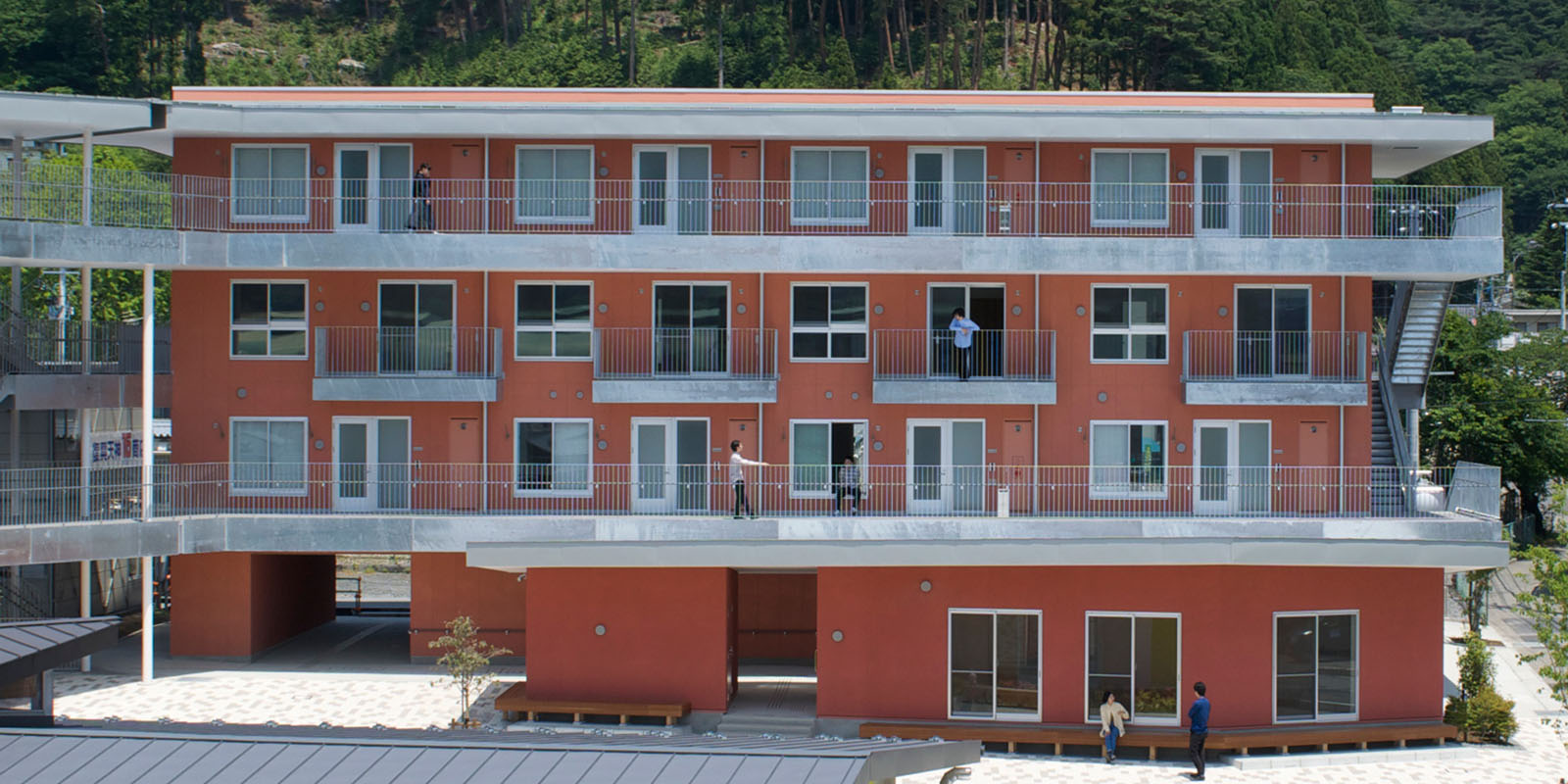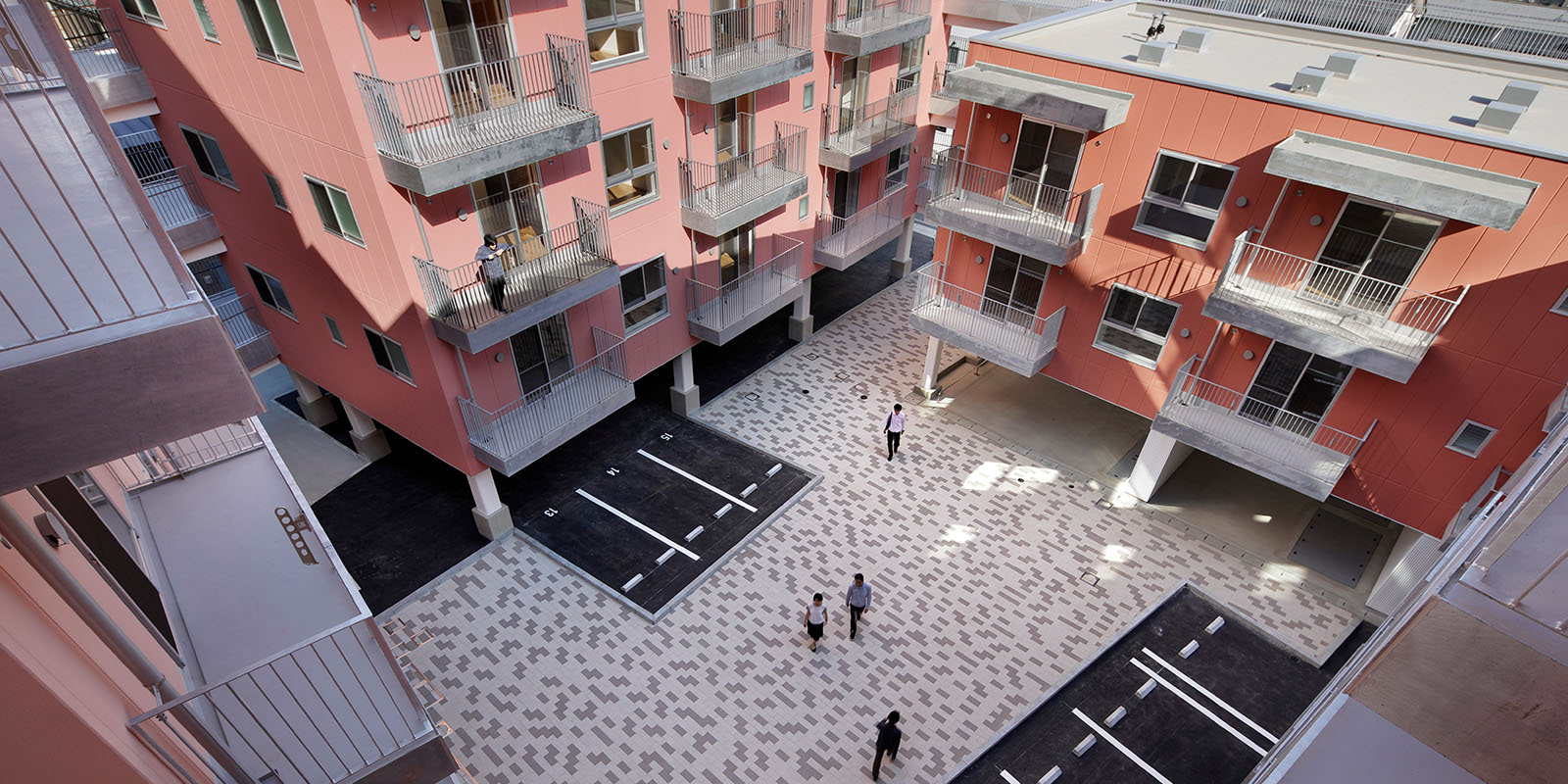A design for life
When the Great East Japan Earthquake struck in 2011, award-winning architect Manabu Chiba was determined to help those worst affected. He did so by co-founding ArchiAid, a group of architects and designers who gave their time and expertise towards the reconstruction of the areas impacted by the disaster. He talks to Marcus Webb about rethinking housing, the importance of connecting people and how cycling can help a community.
What are your memories of the Great East Japan Earthquake?
The day of the disaster I was in the university where I work in Tokyo. It took me eight hours to get home, there were cars everywhere and people were on the streets panicking. Slowly we started to understand what was happening in the eastern part of Japan and we realized just how serious it was and that we had to do something to help the people impacted.
How did you start to help?
A few days after the earthquake I received a phone call from one of my friends, who is also an architect. He was based in the Tohoku region, which had been badly damaged. We started to talk about how we could support the area as architects, to help build new homes and shelters for the people who had lost everything. I reached out to other architects that I knew, and we made a small group to share information and ideas. This was the start of ArchiAid. It grew very quickly, we soon had a network of almost 300 architects.
What were the goals of ArchiAid?
Our objective was to be a platform to connect the people who needed help with those with the expertise to help. We also wanted to make sure the local people were included in the discussion about how to rebuild. After the Great Hanshin earthquake, in 1995, architects had tried to help, but they acted individually – everyone had their ideas for the future and they didn’t work together to actually support the area affected. That’s why we organized this network, so that this time we would work together and with the community.
 © CHIBA MANABU ARCHITECTS
© CHIBA MANABU ARCHITECTS
Did you personally visit the area?
Yes. I had broken my leg just before the earthquake, so I couldn’t move around easily at the time, but I just thought that I should go there to see what was happening anyway. What I saw was terrible. I went to Ishinomaki and areas of the city were completely destroyed – you couldn’t drive on the streets; they were so damaged. But I could see the beauty of the natural landscape and those villages beneath the rubble. The experience of that day deeply moved me to help support the recovery process of the disaster area.
How do you begin the rebuilding process in a place so badly hit?
There are many phases. The first phase is that the government builds temporary housing for people who lost their homes. Usually this is a process that architects aren’t involved in; the government asks big prefabrication companies to make temporary houses. They are really cheaply made, usually with no consideration for the community, spatial quality or how people use their space in daily life. In 2011 architects proposed how the layout of this temporary housing could be organized to improve the quality of life, despite the use of these inexpensive prefabrication materials.
 © CHIBA MANABU ARCHITECTS
© CHIBA MANABU ARCHITECTS
What were the next steps of the recovery?
After the temporary shelter stage, the city prepared more long-term housing for those people who lost their homes. But things take time and in some cases it was already three years after the earthquake before work began on these more permanent homes. I worked on a project
There was a perception that architects were more concerned with designing fancy buildings that would cost a lot of money... I wanted to change that
in Kamaishi city – my mother’s hometown. I was at first faced with some resistance by the community to architects being involved. There was a perception that architects were more concerned with designing fancy buildings that would cost a lot of money than something that worked for the people. I wanted to change that preconception, so I worked with a big prefabrication company to make these new houses within budget and on schedule. Many architects thought that it was foolish of me to do this, because I could not choose nice materials, create nice details or a beautiful structure, but I thought that even with constraints, there must be something that architecture can do to help.
 © Satoshi Shigeta
© Satoshi Shigeta
What was the process like?
It wasn’t easy. The structure system was already decided, my choice of materials was often limited to one and they asked me to use only prefabricated industrial windows, etc. But despite these difficulties, I believed that there must be something that architects can ‘design.’ I started by considering the distance of these units and how they relate with each other. We were building a new community with these buildings and that’s very delicate. People want privacy, but they also want to feel like they are part of a society. It’s important to create that balance. It was
We were building a new community with these buildings and it’s very delicate. People want privacy, but they also want to feel like they are part of a society
another important lesson from Hanshin. A lot of the houses built after the 1995 earthquake had no relation to each other. They were dealing with people who have undergone a huge trauma, sometimes resulting in mental health issues. Sadly, the suicide rates in these buildings were high, and I believe some of that is because people felt that they were no longer connected to each other: they couldn’t build up a new community in those housing complexes. That was in my mind throughout; I had to make a place in which – even though you have your own space – you can still be connected to others.
What had the reaction been?
It’s been very positive, people seem very happy to be there. One thing that has been popular is the color. The city’s symbolic flower is called Hamayuri; it’s quite beautiful and blooms strongly on the rocky beachside, so we made a color palette based on this flower for the reconstruction housing. I thought it would be nice for the city; that this recovery process can be remembered in the future by the color of a flower blooming.
Do you still visit the area?
Yes, I organize an annual bicycle tour of the region, called Pottering Oshika. I thought that it would be nice to start an event which would bring people to the Oshika Peninsula to encourage local people and support the small economies of these local villages. It’s a great event; we enjoy this beautiful landscape, visit local restaurants or buy locally made lunch boxes and take it all in. Cycling is the best way to get to know an area – you actually experience the landscape.
 © CHIBA MANABU ARCHITECTS
© CHIBA MANABU ARCHITECTS
Many architects think that the best way to offer support is to build a beautiful building, but I thought that maybe this recovery process would take a long time. So many businesses were destroyed; the fishing industry was particularly badly hit, and people had to rethink their livelihood because they were displaced from the waterfront. But it’s not just about people changing where they live; they have had to change their entire way of life. The disaster and the recovery work revealed to us how delicate our way of living with nature is, and it should make us rethink how we do this. The tour is a way to remind us of this, commemorate the process of recovery, and to help encourage its continuation.